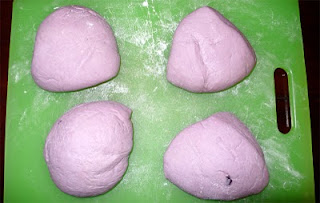As M and I said to each other, god's given us pretty perfect grapes this year, and if the wine's not good it'll be because we messed it up.
Everyone was at our place by 9 AM - except Mark, the delivery guy from M&M. We cleaned everything early, moved all of our gear into place. A clear, beautiful day, we set the destemmer up in front of the house. And we waited. Calls back and forth to M&M didn't resolve much, but around 11 the grapes arrived, and they were easily the best looking grapes we've ever bought.
P&M worked theirs first (and they ended in the barrel above on the left). P&L did most of the work on the Primitivo, and they ended in the barrel on the right above.
By 6 PM the musts were still below 55 F, and we decided to wait until AM to pitch the yeasts. (We did add 10% meta solution to the must as we destemmed it, to put the sulfites between 40 ppm and 50 ppm.)
Most notable, I think we're getting a little bit of fermentation starting right off the bat from the wild yeasts on the grapes - not as easy to see in the photos I've taken as it is when you just look in the barrel. [OK, here's a note from the following morning - I'm wrong and just over-anxious.]
By late tomorrow morning I'll have the stats updated. All grapes seemed to be between 24 and 27 Brix on arrival. Acid in the Primitivo seems very high, but we need to get fresh tests, and also we'll be forcing MLF, which should help bring it down. All grapes were sweet to the taste, seeds nutty, very little rot, raisining and mold.







